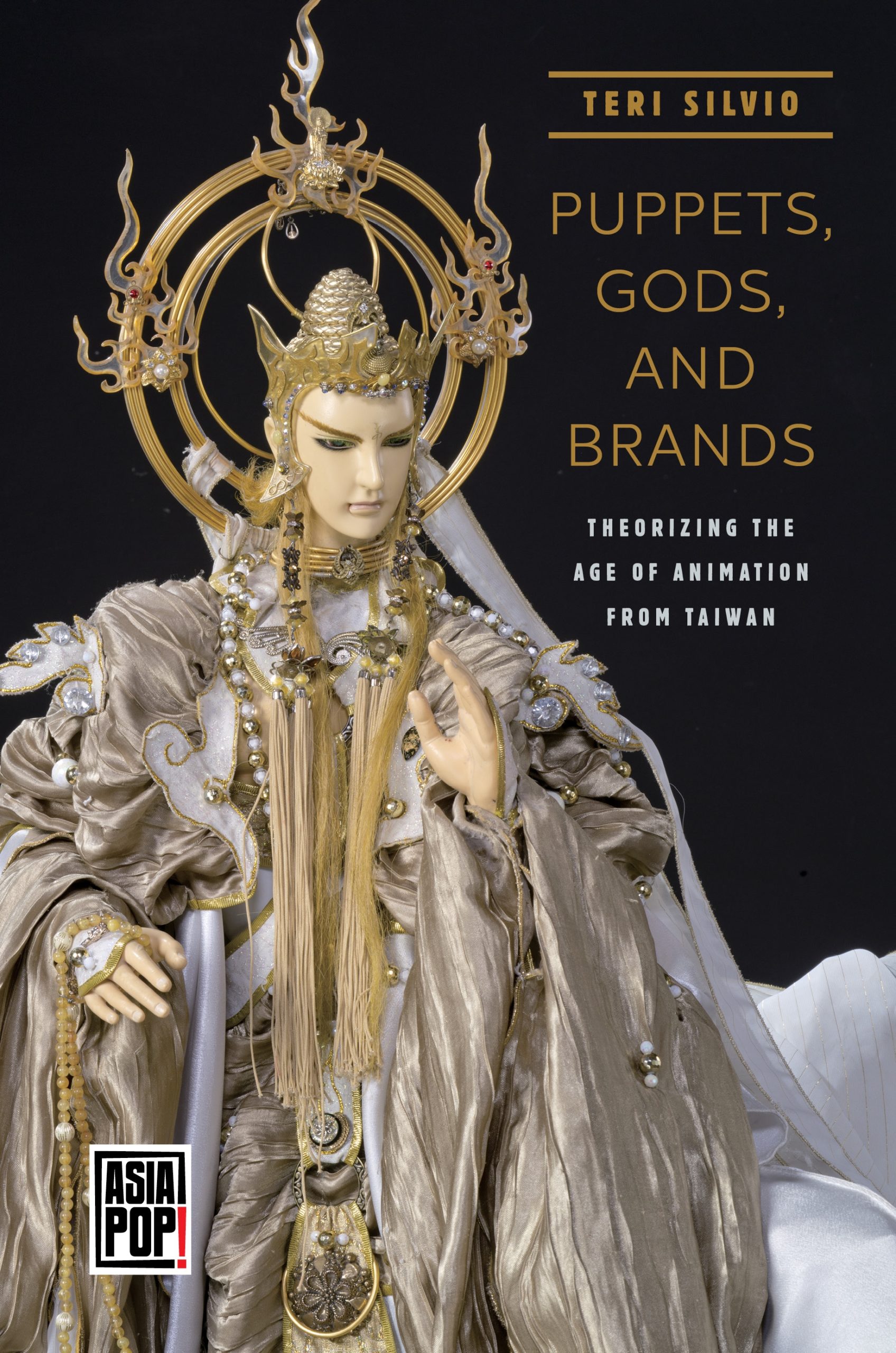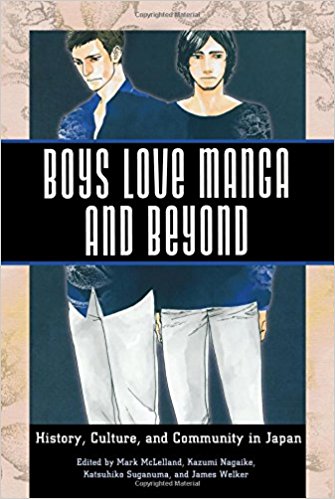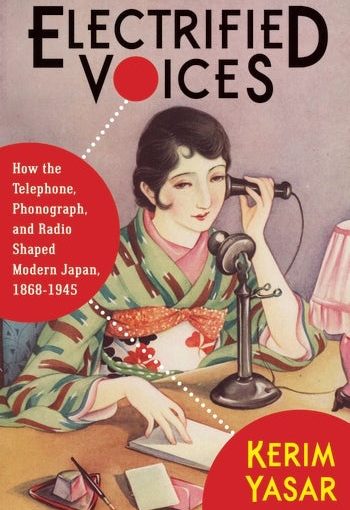Silvio, Teri. Puppets, Gods, and Brands: Theorizing the Age of Animation from Taiwan. Honolulu: University of Hawaii Press, 2019.
I-lin Liu
How do people animate inanimate objects? And what does it mean when we treat objects like they are humans? Anthropologist Teri Silvio’s new book Puppets, Gods, and Brands: Theorizing the Age of Animation from addresses these questions and demonstrates the larger scholarly implications of these seemingly naïve queries. The book is based on Silvio’s decade-long fieldwork of Pili puppetry producers, fans, toy designers, and Japanese anime/manga fans in Taiwan.[i] Presenting a new theory that animation is a mode of action alternative to performance, Silvio persuasively establishes animation as the new framework to understand social life.
In chapter 1 of the book, Silvio defines what she means by “animation”, and sketches out the differences between animation and performance. Animation creates others, while performance creates self-identity. Although the concept of performance helps us to think about identity in a non-essentialist way, it also tends to reduce all speech acts into acts of self-creation. The performance model of action thus obscures the fact that some speech acts are meant for creating others, and not constructing oneself. To fill the lacuna created by the performance paradigm, Silvio defines animation as “the construction of social others through the projection of qualities perceived as human—life, soul, power, agency, intentionality, personality, and so on—outside the self and into the sensory environment, through acts of creation, perception, and interaction” (19).
Silvio’s approach to animation is anthropological. “Anthropological” means two things here. First, animation refers to “a broader category of human, cultural action” (4). Animation is thus an action that invests “virtual beings and objects” with agency. Second, animation is cultural. If animation is projecting human qualities onto the environment or other objects, what qualities count as human, and what entitles have those qualities innately are culturally defined. Silvio’s research is different from existing scholarship on animation in two ways. First, under this framework, instead of focusing on animation as a machine that harnesses the technological power afforded by the animation stand, Silvio posits animation as a social means to create worlds and the objects that inhabit them.[ii] Rather than asking how anime texts show us different ways to think about technology and cope with the technologized world, she asks: “What does it mean to make such things, to invest them with their own agency, and what is it like to live among them?” (4) Second, Silvio’s animation study is different from previous ethnographical studies of production and consumption of anime. Rather than observing how the collaboration of individual social actors create the “dynamics of cultural movements” (collective social forces), Silvio is interested in elucidating the principles and logics of animation as a mode of action.[iii]
By treating animation as a type of social action to produce alterity, Silvio thus broadens the scope of animation studies. Animation studies should not only focus on the more familiar research objects: anime programs, manga, films, toys, fans, and the industry. But also, one should see animation as social practice. And here is why Taiwan is a crucial site for Silvio, for one can find different modes of animation coexist on the island. Japanese animation and manga are extremely popular among Taiwanese people. But there is also a vibrant local animation practice. This is what Silvio calls the ang-a mode of animation, which has its root in Taiwanese folk religion, but it has also been shaping the production and consumption of the Pili puppetry shows.
After outlining her theory of animation, in Chapter 2 Silvio discusses in detail the ang-a mode of animation. Ang-a means puppet in the Taiwanese Hokkien language. Silvio defines it as: “a small, three-dimensional image of a person or sometimes an anthropomorphized animal or object” (58). The basic form of the ang-a mode of animation might be crudely rendered as idol worship. In temples and many households in Taiwan, one can easily find these small statues, and people would perform pai-pai (worship) to these icons to communicate with the deities or ancestors these icons represent.
The ang-a mode is different from the European and the Japanese traditions of animation. In the European model, humans (animators) are the god that create the whole fictional world. In the Japanese model, the world is already full of spirits embodied in natural, animal, or human forms, without the intervention of human beings. In the ang-a model, the animated object (the statue or the ang-a) is always anthropomorphic. Additionally, humans must play a role in transforming these statues into embodiments of gods, hence animating them. However, humans are not dominating these animated beings. Ang-a has its own agency that humans must respect. For example, it is common in Taiwan that one has to ask for the gods’ permission to move their statues into a new place.[iv]
After outlining her theoretical framework and what the ang-a mode of animation is, the rest of the book analyzes how the ang-a mode of animation intertwined with other social phenomena. Silvio focuses on two issues. First is how the ang-a mode of animation intersects with the Japanese mode of animation. The second one is how the ang-a mode shapes identity and identity politics. Chapter 3 analyzes how the Japanese mode of animation molds Taiwanese people’s understanding of traditional folk religion, which is the source for the ang-a mode of animation. The chapter focuses on cute Buddhist and Taoist god figurines designed in Japanese anime/manga style and their collectors. Through interview and participant observation, Silvio argues that unlike the traditional Taiwanese folk religion believers (who are mostly interested in practical rewards from their gods), these figurine collectors, similar to otakus in Japan, are more interested in the affects or emotional attachments (the moé feelings) these figures could offer.[v]
Chapter 4 uses The Arti (2015) and Thunderbolt Fantasy (2016), two Pili company’s attempts to enter the global market, to analyze how a media company negotiates the ang-a mode with other modes of animation. Through interviewing key personnel at the Pili company and close-reading of the two works, Silvio shows that Thunderbolt Fantasy was more successful in the overseas markets, because it simultaneously retained elements of the ang-a mode of animation and established commonalities between the ang-a mode of animation and the Japanese one.
Chapter 5 discusses the fan culture of cosplaying Pili characters. Silvio argues that cosplaying provides a mechanism and a space for Pili cosplayers (many of whom are young women with pink-collar jobs) to cope with their daily lives where performing affective labor is imperative. Unlike Western cosplayers who might use “method acting” to get into characters’ minds, Taiwanese Pili cosplayers are more interested in the exteriority of the character. Dressing up as Pili puppets provides these working women a chance to become something like screens and let different elements, such as their costumes, and onlookers’ cameras, converge on their bodies to animate the characters. Looked at this way, Silvio argues, Pili cosplay becomes a passive and restorative mode of play for these workers.
Chapter 6 and the conclusion explore the politics of animation. And this is perhaps the most utopic section of the book. The politics of animation, according to Silvio, is this: “We can choose how to animate our worlds, but others must live in them, and vice versa. Your fictional characters, your gods, your identities—they are not yours. They come from and belong to no one and everyone. They have their own lives” (208). With this principle, Silvio attempts to carve out a space for animation and its related phenomena, fetish and fetishism, in progressive politics. Fetishism means “person-ification of things” (178), which happens when we animate a thing (the fetish) with human qualities. A common leftist critique of fetishism is that it misattributes agency to something that has none, and therefore obscures the social struggles that produce that entity. From this perspective, nationalism is a paradigmatic case of fetishism because it often creates and attributes agency to a fictional entity. Moreover, this process often paves over the fact that nation-building projects have to suppress marginal or dissenting voices. Responding to this critique, Silvio first points out that it is not the case that all construction of identity involves abjection and exclusion (188-190). Then, she argues that, following David Graeber, we should see fetishism not merely as misrecognition, but as an indication of “social creativity” (207). A politics of animation can be progressive if we know how to harness this power of social creativity.
To conclude this review, I would like to raise one topic inspired by the book that is worth exploring further. I am thinking about the intersections between modes of animation. In Silvio’s book, she juxtaposes the ang-a mode with the European and the Japanese modes, and she explores in depth the interaction between the Japanese mode and the ang-a mode through case studies of the Pili media ecology (TV series, films, and fan culture). While these case studies are illuminating, it might be interesting to learn more about how the European mode of animation intersects with the ang-a mode. One research avenue we might pursue is how Taiwanese folk religion (the source of the ang-a mode) impacts Catholic or Christian religious practices in Taiwan, and vice versa.[vi]
Puppets, Gods, and Brands is theoretically sophisticated and well-grounded in ethnographic research. Silvio’s book has expanded our understanding of animation and built the foundation for more research on animation to come.
References
Azuma, Hiroki. Otaku: Japan’s Database Animals. Minneapolis: University of Minnesota Press, 2009.
Chen, Yijun. “Zongjiao Jingyan De Zhaohuan Yu Zuxian Jiyi De Zhongsu: Pingdong Wanjin Tianzhujiaotu De Jiyi, Yishi Yu Rentong” [The Evocation of Religious Experiences and the Reformulation of Ancestral Memories: Memory, Ritual, and Identity among Bankim Catholics in Taiwan]. PhD. Dissertation, National Taiwan University, 2011.
Condry, Ian. The Soul of Anime: Collaborative Creativity and Japan’s Media Success Story. Durham and London: Duke University Press, 2013.
Lamarre, Thomas. The Anime Machine: A Media Theory of Animation. Minneapolis: University of Minnesota Press, 2009.
I-Lin Liu is a PhD candidate in the Media School, Indiana University, Bloomington. His research focuses on the reception and repurposing of art cinema in postwar Taiwan. He has written about USIA’s programming of experimental and student films in the 1970s. The essay, “Useful Experimental Cinema,” can be found in the Journal of E-Media Studies. He can be reached at: ilinliu@iu.edu.
[i] Pili is a media production company specializing in creating wuxia serials with puppets for television and cinema. Their works are mostly in the wuxia genre. Or as Silvio puts it in an interview, Pili’s works are like “someone had decided to remake Tsui Hark’s swordsman fantasy films using puppets”. For more on the Pili company, see chapter 4 of Silvio’s book. For her interview, see https://campanthropology.org/2019/11/18/teri-silvio-puppets-gods-brands/
[ii] Thomas Lamarre, The Anime Machine: A Media Theory of Animation (Minneapolis: University of Minnesota Press, 2009).
[iii] Ian Condry, The Soul of Anime: Collaborative Creativity and Japan’s Media Success Story (Durham and London: Duke University Press, 2013), 16.
[iv] Silvio further uses Philippe Descola’s concepts of animism and analogy to distinguish between the Japanese anime mode and the ang-a mode of animation. In the animist mode, there is a distinction between the real and the fictional. For instance, there is a strong sense of distinction between the 2D and the 3D (“real”) worlds in otaku and fujoshi’s practices of animation. Contrastingly, the ang-a mode operates with the logic of analogy. Ang-a mode practitioners will map one framework onto another realm. For example, in face reading practices (xiangxue), features of a face will be linked analogically to other symbolic orders (geography, zodiac signs, the seasons, etc.). So, in the ang-a mode, the fiction world is always analogous to reality. The two are not categorically separated (85).
[v] Hiroki Azuma, Otaku: Japan’s Database Animals (Minneapolis: University of Minnesota Press, 2009).
[vi] Here, I am thinking about the Catholic practices in Wanjin, Pindung, Taiwan. Catholics of the Wanjin community have long been incorporating Taiwanese folk religious elements into their practices. One example is that during every Christmas, Wanjin Catholics will host a pilgrimage, not unlike the pilgrimage for the sea goddess Mazu (see Silvio’s discussion of Mazu on p.71), for the Virgin Mary. It might be fruitful to use Silvio’s framework to analyze how Taiwanese Catholic believers negotiate between the ang-a mode of animation and the European Catholic one. For a thorough ethnography on Wanjin and its religious practices see Yijun Chen, “Zongjiao Jingyan de Zhaohuan yu Zuxian Jiyi de Zhongsu: Pingdong Wanjin Tianzhujiaotu de Jiyi, Yishi yu Rentong” (Ph.D. Dissertation, National Taiwan University, 2011).




